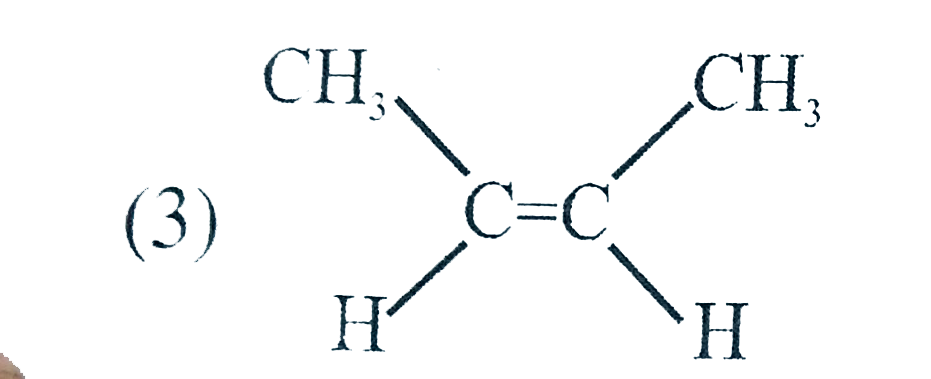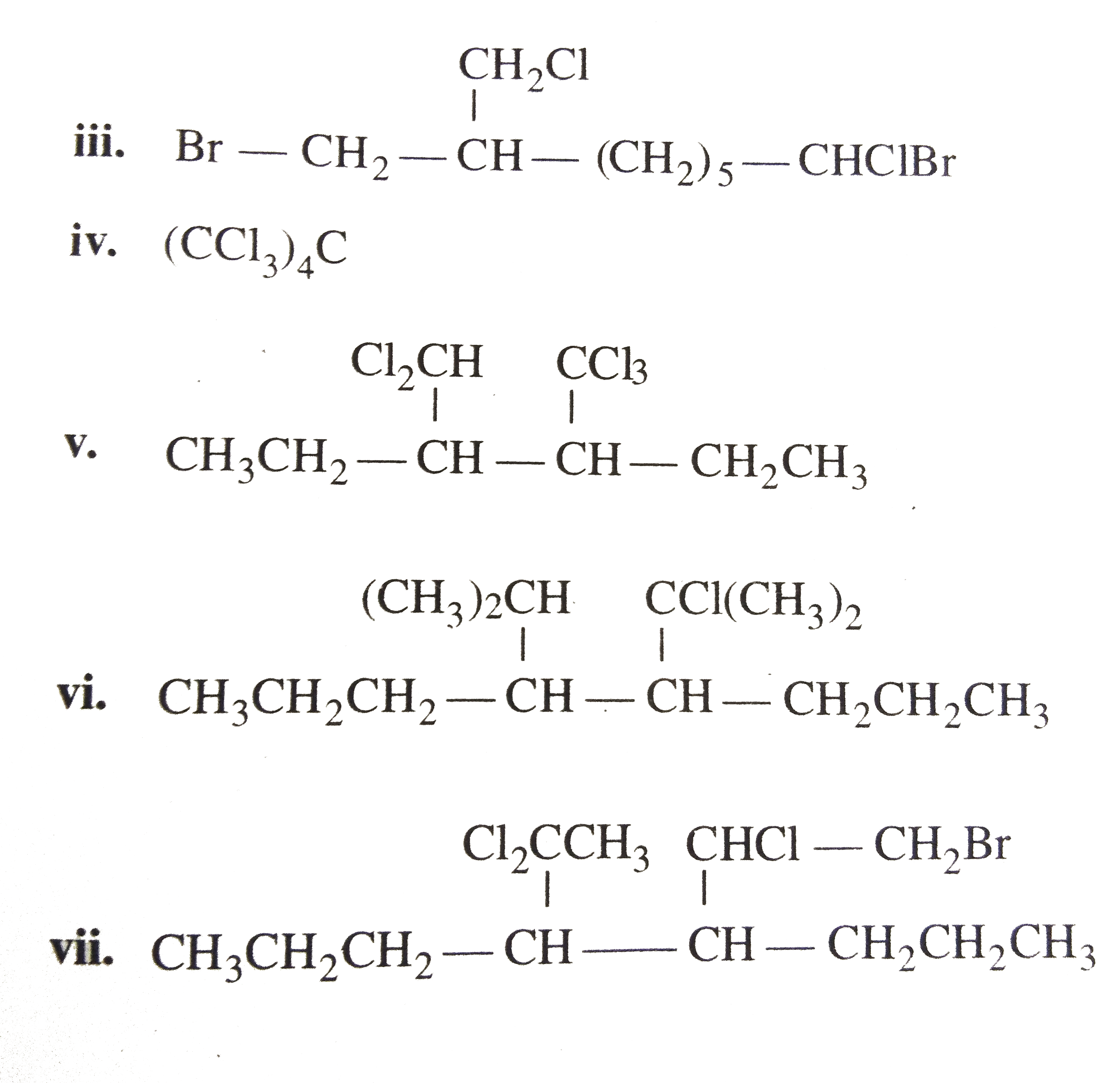CH3−C∣∣Cl−C−Br−Cl is
trans
Z
both correct
none of these
The correct Answer is:B
To determine the configuration of the compound CH₃−CH(Cl)−CH(Br)−C(Cl), we need to analyze the substituents on the double bond and apply the Cahn-Ingold-Prelog priority rules. Here’s a step-by-step solution:
Step 1: Identify the Double Bond
The compound has a double bond between two carbon atoms. We need to identify the two carbon atoms involved in the double bond and their substituents.
Step 2: Assign Priorities to Substituents
For the two carbon atoms involved in the double bond, we will assign priorities to their substituents based on atomic number:
- For the first carbon (C1) attached to the double bond:
- CH₃ (methyl group) has a lower priority (atomic number 6 for carbon) compared to Cl (atomic number 17).
- Therefore, Cl has a higher priority than CH₃.
- For the second carbon (C2) attached to the double bond:
- Cl has a higher priority than Br (atomic number 35) since both are halogens.
- Therefore, Br has a lower priority than Cl.
Step 3: Determine the Configuration
Now we have:
- C1: Cl (higher priority) and CH₃ (lower priority)
- C2: Cl (higher priority) and Br (lower priority)
Now we can analyze the arrangement:
- If the higher priority groups (Cl on C1 and Cl on C2) are on the same side of the double bond, it is a Z configuration.
- If they are on opposite sides, it is an E configuration.
In our case, since both Cl groups are on the same side, the configuration is Z.
Step 4: Conclusion
Thus, the compound CH₃−CH(Cl)−CH(Br)−C(Cl) is in the Z configuration.
Final Answer
The compound is in the Z configuration.
---
The compound has a double bond between two carbon atoms. We need to identify the two carbon atoms involved in the double bond and their substituents.
For the two carbon atoms involved in the double bond, we will assign priorities to their substituents based on atomic number:
- For the first carbon (C1) attached to the double bond:
- CH₃ (methyl group) has a lower priority (atomic number 6 for carbon) compared to Cl (atomic number 17).
- Therefore, Cl has a higher priority than CH₃.
- Cl has a higher priority than Br (atomic number 35) since both are halogens.
- Therefore, Br has a lower priority than Cl.
Now we have:
- C1: Cl (higher priority) and CH₃ (lower priority)
- C2: Cl (higher priority) and Br (lower priority)
- If the higher priority groups (Cl on C1 and Cl on C2) are on the same side of the double bond, it is a Z configuration.
- If they are on opposite sides, it is an E configuration.
Thus, the compound CH₃−CH(Cl)−CH(Br)−C(Cl) is in the Z configuration.
The compound is in the Z configuration.
Topper's Solved these Questions
- SOME BASIC PRINCIPALS OF ORGANIC CHEMISTRYBOOK - A2ZCHAPTER - SOME BASIC PRINCIPALS OF ORGANIC CHEMISTRYEXERCISE - Optical Isomerism
53 Videos
- SOME BASIC PRINCIPALS OF ORGANIC CHEMISTRYBOOK - A2ZCHAPTER - SOME BASIC PRINCIPALS OF ORGANIC CHEMISTRYEXERCISE - Confirmational Isomerism
25 Videos
- SOME BASIC PRINCIPALS OF ORGANIC CHEMISTRYBOOK - A2ZCHAPTER - SOME BASIC PRINCIPALS OF ORGANIC CHEMISTRYEXERCISE - Tautomerism
16 Videos
- SOME BASIC CONCEPTS OF CHEMISTRYBOOK - A2ZCHAPTER - SOME BASIC CONCEPTS OF CHEMISTRYEXERCISE - Section D - Chapter End Test
30 Videos
- STATES OF MATTERBOOK - A2ZCHAPTER - STATES OF MATTEREXERCISE - Section D - Chapter End Test
30 Videos
Similar Questions
Knowledge Check
CH3−CH=C∣Br−C∣Cl=CH−CH3
How many geometrical isomers are possible for this compound?A2B3C4D6CH3−C∣ClH−C∣ClH−CH3(i)Alc.KOH−−−−−−−−−−→(ii)NaNH2A (major) H2−−−−−−−→Pd/CaCO3B
ACH3CH2−CH=CH2BCH2−CH2−CH2−CH3C D
D
H3C−O−CH2−Cl H3C−C∣∣O−CH2−Cl H3C−CH2−Cl H3C−Cl
AQ>P>S>RBP>Q>R>SCS>R>P>QDS>R>Q>P
How many sereoisomera are possible for
CH3−C∣BrH−C∣Cll−C∣BrH−CH3
View SolutionOut of CH3_C∣CH3H−CH2−ClandCH3−CH2−C∣CH3H−Cl which in more reactive towards SN1 reaction and why?
View SolutionOut CH3−CH∣CH3−CH2−Cl and CH3−CH2−CH∣CH3−Cl , which is more reactive towards SN1 reaction and why?
View SolutionWrite IUPAC names of the following componds :
(i) CH3−Cl∣C∣CH3−CH3 (ii)CH3−C∣ClH−CH3
View SolutionCH3−C∣ClH−C∣IH−CH3
CH3−C∣CH3H−(CH2)4−C∣CH3H−C∣BrH−CH2CH3


View Solution
